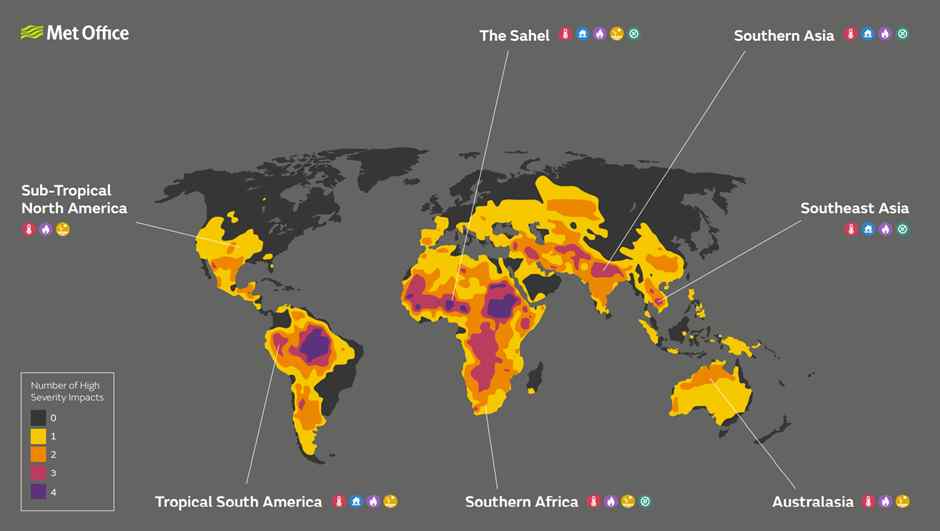Tue 09 November 2021:
If global temperatures rise above 2 degrees Celsius, one billion people might be affected by high heat stress, a potentially fatal mix of heat and humidity, according to a new scientific report released on Tuesday by the UK Meteorological Office.
At the new temperature – according to new figures and a map from the Met Office – the number of people living in areas affected by extreme heat stress rises from 68 million today to around one billion,” the study said, adding that the 4.0C rise could see nearly half of the world’s population living in areas potentially affected.
According to the scientists, who based their results on data from an international team led by the University of Exeter, tropical countries such as Brazil and Ethiopia will be the worst affected.
The UK Meteorological Office report comes as the United Nations Conference on Climate Change (COP26), which is taking place in Glasgow, Scotland, from October 31 to November 12, is expected to reach meaningful commitments to reduce greenhouse emissions, achieve carbon neutrality, and limit global warming to 1.5 degrees Celsius.
This new combined analysis shows the urgency of limiting global warming to well below 2.0C. The higher the level of warming, the more severe and widespread the risks to people’s lives, but it is still possible to avoid these higher risks if we act now,” project leader and climate scientist Richard Betts of the Meteorological Office and the University of Exeter was quoted as saying.
Human heat stress risk is affected by both temperature and humidity, and is measured using the wet bulb temperature, which was set at 32 degrees by the researchers.
It can lead to heat exhaustion, with symptoms including heavy sweating and a rapid pulse, straining the heart and other organs.
The elderly, those with pre-existing health conditions and those with physical, outdoor jobs are at the greatest risk.
Photo: This map shows regions where multiple severe impacts may occur at similar times at 4.0°C of global warming above pre-industrial levels. These impacts include extreme heat stress risk, river flooding, drought and wildfire risk, overlaid with an indicator of present-day food insecurity. The annotated regions highlight locations of particular concern where multiple severe impacts coincide under 4.0°C global warming.
_____________________________________________________________________________
FOLLOW INDEPENDENT PRESS:
TWITTER (CLICK HERE)
https://twitter.com/IpIndependent
FACEBOOK (CLICK HERE)
https://web.facebook.com/ipindependent
Think your friends would be interested? Share this story!





